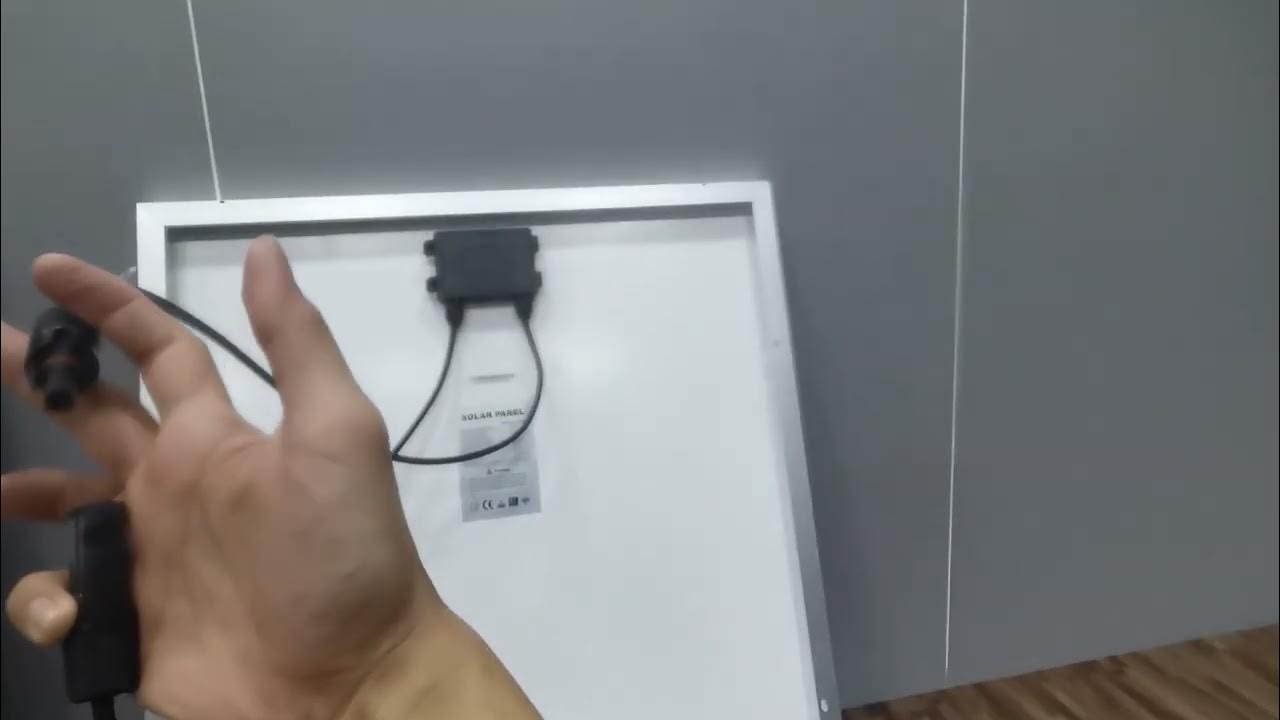FULL ILMU GRATIS !! INILAH CARA MEMBUAT LAMPU TANPA LISTRIK PLN TERMUDAH !!
Summary
TLDRThis instructional video from Business Inspiration guides viewers on crafting a simple lamp circuit powered by solar energy. The presenter details the process of assembling a battery pack using affordable lithium batteries, connecting a solar panel, and wiring up LEDs in parallel for optimal brightness. Additional components like a TP4056 charging module, a diode for protection, and a switch are included for a complete setup. The video promises a hands-on project that's both eco-friendly and cost-effective, with a potential for further enhancements like light sensors for automatic operation.
Takeaways
- 🌞 The video demonstrates how to create a simple lamp circuit using solar panels instead of traditional electricity.
- 🛠️ Solar panels for this project are affordable, costing around 15 thousand, and can be purchased online or at electronic stores.
- 🔋 A 3.7-volt lithium battery, also known as a battery charge, is used as the power source and can be sourced from old emergency lamps.
- 🔌 The assembly of the battery involves connecting multiple batteries in parallel or series, depending on the desired voltage output.
- 🔆 The solar panel has two pins, positive and negative, which are connected to the battery for charging.
- 💡 For the lamp, a damaged emergency lamp can be repurposed, using the middle light that can be powered by a battery or phone charger.
- 🔦 LED lights are used for the lamp, with the number of lights and their arrangement depending on personal preference, but must be in parallel to maintain the voltage.
- 🔄 A TP4056 charge module is used for charging the battery, featuring input for both solar panel and USB connections, and indicator lights for charging status.
- 🛑 An IN4001 diode is added for protection against current leakage from the battery to the solar panel, ensuring the solar panel is not damaged.
- 🔄 The final circuit allows for automatic charging when the solar panel is exposed to sunlight, with indicator lights showing charging status.
- ⏱️ A single battery can last approximately 2 hours with 4 LED lights, suggesting a total runtime of around 8 hours for the setup.
Q & A
What is the main topic of the video?
-The main topic of the video is creating a simple lamp circuit using solar panels without relying on PLN (Public Lighting Network) electricity.
What are the approximate costs of the solar panels mentioned in the video?
-The solar panels mentioned in the video are quite affordable, with a price of around 15 thousand, which can be purchased online or at electronic equipment stores.
What type of battery is used in the video for the lamp circuit?
-A 3.7-volt lithium battery, commonly referred to as a battery charge, is used in the video for the lamp circuit.
Where does the video suggest sourcing the lithium battery from?
-The video suggests sourcing the lithium battery from an old emergency lamp found in a junkyard, as they are affordable and can be easily repurposed.
How can the battery life be extended in the lamp circuit?
-The battery life can be extended by using multiple batteries in parallel, which will provide a longer runtime compared to using a single battery.
What is the purpose of the diode in the circuit?
-The diode, specifically the IN4001 diode, is used to provide additional protection to the circuit by preventing current leakage from the battery to the solar panel.
What component is used to convert the solar panel's energy into a usable form for the battery?
-The TP4056 charge module is used to convert the solar panel's energy into a usable form for charging the battery.
What is the function of the switch in the lamp circuit?
-The switch in the lamp circuit is used to control the power supply to the LEDs, allowing the user to turn the lamp on and off.
How does the video suggest testing the lamp circuit without using PLN electricity?
-The video suggests using a normal cellphone charger with a 5-volt output to test the lamp circuit without using PLN electricity.
What type of LEDs are used in the lamp circuit, and how many can be used according to the video?
-3-millimeter LEDs are used in the lamp circuit, and the number of LEDs that can be used depends on individual preferences, but they must be connected in parallel to maintain the input voltage of 3 volts.
What is the estimated battery life when using four 3-millimeter LEDs?
-The estimated battery life when using four 3-millimeter LEDs is approximately 8 hours, based on the video's claim that one battery can last about 2 hours with such a setup.
Outlines

This section is available to paid users only. Please upgrade to access this part.
Upgrade NowMindmap

This section is available to paid users only. Please upgrade to access this part.
Upgrade NowKeywords

This section is available to paid users only. Please upgrade to access this part.
Upgrade NowHighlights

This section is available to paid users only. Please upgrade to access this part.
Upgrade NowTranscripts

This section is available to paid users only. Please upgrade to access this part.
Upgrade NowBrowse More Related Video

Solar Powered Automatic Day night sensor Light ( No LDR and No Relay )

Lecture 5:Challenges of Reaching a Million Users by Prof. Chetan Solanki and Prof Jayendran V Part 1

cara membuat alat sederhana yang menerapkan konsep listrik dinamis (Senter Sederhana)

Panel surya hybrid dengan ATS

Cara membuat kerajinan dari bambu yang mudah | nih yang lagi cari tugas kerajinan di skolah

Cara buat lampu otomatis 220 volt tanpa relay
5.0 / 5 (0 votes)